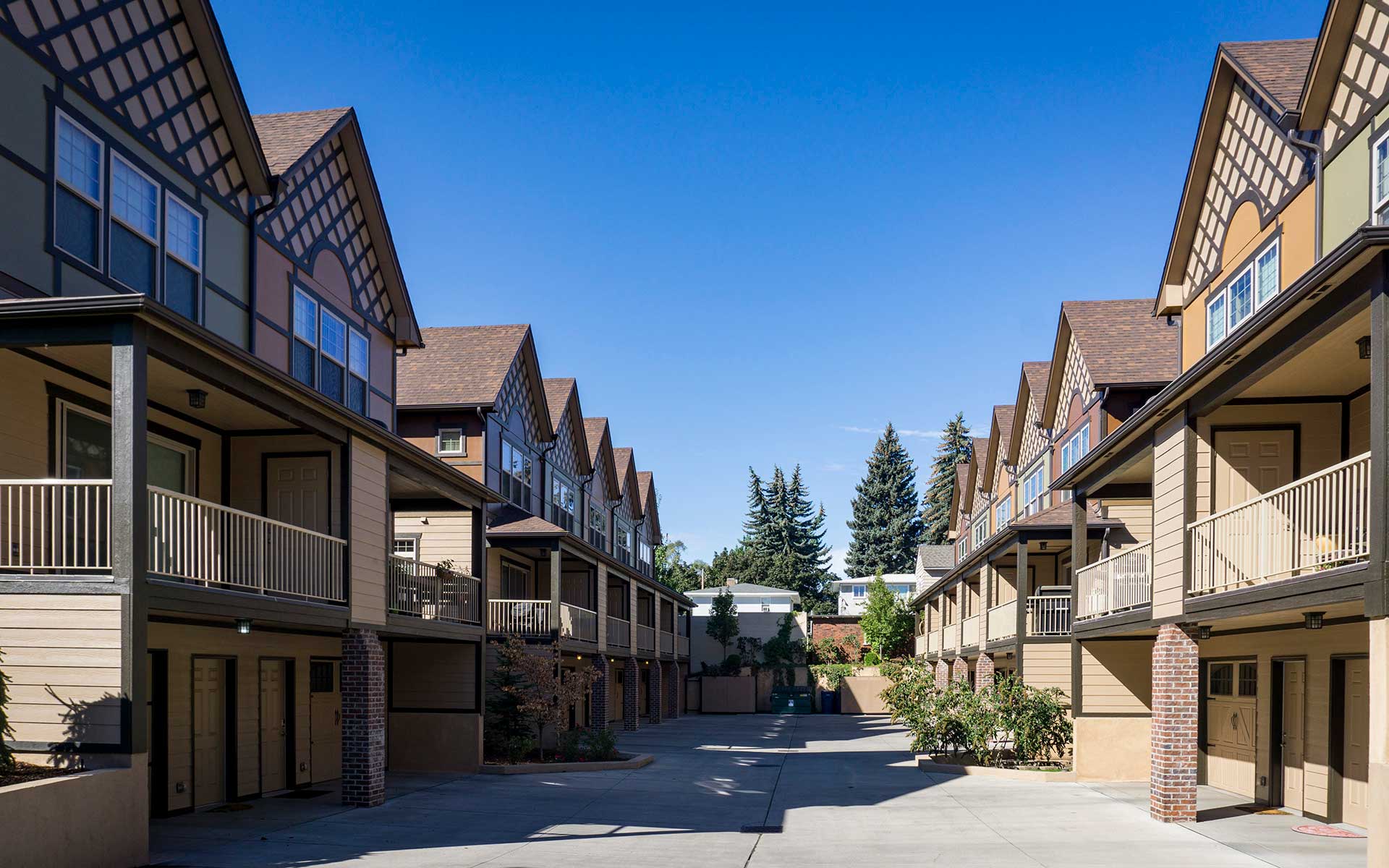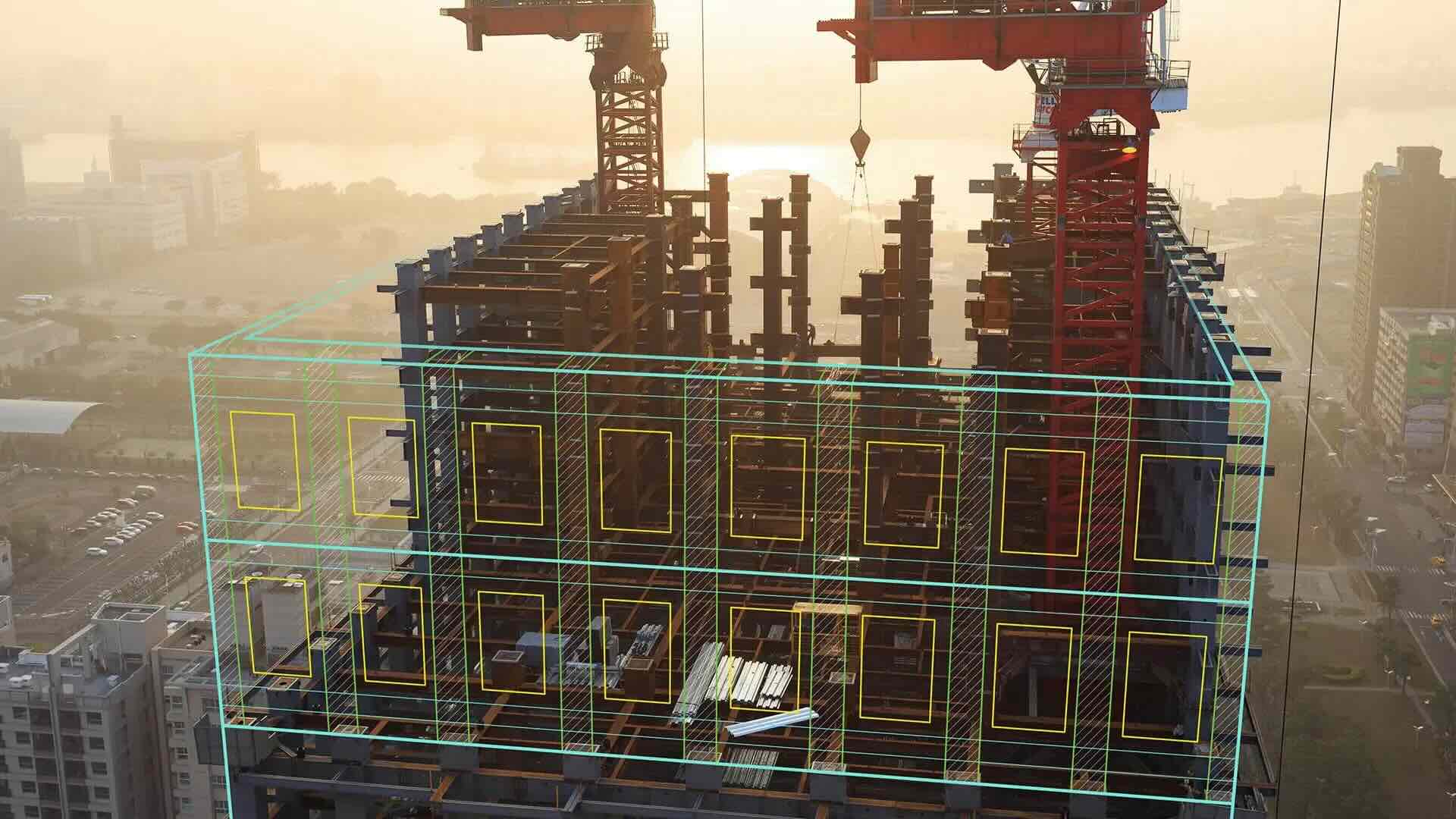Home>Garden Essentials>How To Find A Small-Scale Developer For An Urban Infill Project In WA


Garden Essentials
How To Find A Small-Scale Developer For An Urban Infill Project In WA
Modified: March 24, 2024
Looking to find a garden-focused small-scale developer for your urban infill project in WA? Discover expert tips and strategies to locate the perfect fit for your project.
(Many of the links in this article redirect to a specific reviewed product. Your purchase of these products through affiliate links helps to generate commission for Storables.com, at no extra cost. Learn more)
Introduction
Welcome to the world of urban infill projects! Infill development has become a popular trend in many cities, as it offers a sustainable solution for utilizing underutilized spaces within urban areas. If you’re considering embarking on an urban infill project in Washington (WA), finding the right small-scale developer is crucial to your success.
Urban infill projects involve developing vacant or underdeveloped land within existing urban areas. Rather than expanding the city’s boundaries, infill development focuses on maximizing the potential of existing infrastructure and resources. This approach helps create vibrant and sustainable communities, reduces urban sprawl, and makes efficient use of already developed areas.
However, undertaking an urban infill project can be challenging. It requires careful planning, innovative design, and seamless execution. This is where a small-scale developer comes into play. Hiring a developer with experience in urban infill projects can be instrumental in navigating the complexities and ensuring the project’s success.
So, what makes finding a small-scale developer for your urban infill project in WA so important? Let’s explore.
Key Takeaways:
- Finding the right small-scale developer is crucial for urban infill projects in WA. Look for expertise in infill projects, strong communication skills, and a passion for community development.
- Research potential developers through online resources, local organizations, and networking events. Evaluate their credentials, visit previous projects, and consult with key stakeholders to make an informed decision.
Read more: What Is Urban Infill Development
Understanding Urban Infill Projects
Before diving into finding a small-scale developer for your urban infill project in WA, let’s first gain a deeper understanding of what urban infill projects entail and the benefits and challenges they present.
Urban infill projects, as mentioned earlier, involve the development of vacant or underutilized land within existing urban areas. These projects take advantage of available space within the city limits instead of expanding outward. By revitalizing and repurposing these areas, infill projects contribute to the growth and sustainability of cities.
Now, let’s explore some of the benefits of small-scale development in urban infill projects:
- Preserving the fabric of the community: Urban infill projects allow for the revitalization of existing neighborhoods, preserving their historical and cultural values. By incorporating new development while maintaining the existing character, these projects promote a sense of identity and community pride.
- Utilizing existing infrastructure: One of the major advantages of infill development is the ability to leverage existing infrastructure and resources. By utilizing roads, utilities, and other essential services that are already in place, the cost and environmental impact of the project can be significantly reduced.
- Reducing urban sprawl: Urban infill projects play a crucial role in curbing urban sprawl, which refers to the continued expansion of cities into surrounding areas. By focusing on the development of vacant lots within the city, infill projects help preserve open spaces and agricultural lands on the outskirts of urban areas.
- Creating vibrant and walkable communities: By introducing mixed-use developments, such as residential complexes, retail spaces, and recreational areas, urban infill projects contribute to the creation of vibrant and walkable communities. This enhances the quality of life for residents and promotes a more sustainable lifestyle.
While there are numerous benefits associated with urban infill projects, it’s essential to acknowledge the challenges that come with small-scale development in this context:
- Land acquisition: Finding suitable land for an infill project can be a challenge, as available parcels within established urban areas may be limited and expensive. Developers must navigate through zoning regulations and potential conflicts with existing property owners.
- Community resistance: Infill projects may face opposition from community members who are concerned about the impact on their neighborhoods, such as increased traffic, parking issues, or changes in the character of the area. Engaging with the community and addressing their concerns is crucial for successful infill development.
- Design and construction limitations: Small-scale developers must work within the constraints of existing infrastructure, such as utility connections, building heights, and setbacks. These limitations may require innovative design solutions and collaboration with various stakeholders.
- Cost considerations: Developing within established urban areas can be more expensive than starting from scratch in undeveloped areas. Small-scale developers must carefully analyze the project’s budget and seek creative financing options.
By understanding the definition of urban infill projects and the benefits and challenges they present, you are well-equipped to embark on your quest to find a small-scale developer for your project in WA.
The Importance of Finding a Small-Scale Developer
When embarking on an urban infill project in WA, hiring the right small-scale developer can make all the difference. They bring a unique set of skills and expertise that are essential for the success of such projects. Let’s explore why finding a small-scale developer is so important and the qualities you should look for.
Why hiring a small-scale developer is advantageous for urban infill projects:
1. Experience in urban infill projects: Small-scale developers specializing in urban infill projects have a deep understanding of the unique challenges and opportunities that these projects present. They have experience navigating complex zoning regulations, working with existing infrastructure, and collaborating with local communities.
2. Holistic project vision: A small-scale developer is often more focused on creating a sustainable and community-centric project rather than solely maximizing profits. They are passionate about revitalizing existing neighborhoods, preserving architectural heritage, and creating spaces that integrate seamlessly into the urban fabric.
3. Adaptive approach: Infill projects require developers to adapt their designs and construction techniques to fit within the limitations of existing infrastructure and the community context. Small-scale developers have the agility and flexibility to adjust their plans and find innovative solutions to overcome challenges.
4. Local knowledge and connections: Small-scale developers often have deep roots within the local community. They have established relationships with key stakeholders, such as local government officials, community organizations, and contractors. This local knowledge and network can expedite the approval process and help in building valuable partnerships.
Qualities to look for in a small-scale developer:
1. Expertise in urban infill projects: Look for a developer who has a proven track record in successful urban infill projects. They should have experience in navigating regulations, understanding the complexities of working within established areas, and demonstrating a commitment to sustainability.
2. Strong communication and collaboration skills: A small-scale developer should be an effective communicator and collaborator. They should be able to clearly convey their vision for the project, listen to the needs and concerns of stakeholders, and foster a collaborative environment that promotes constructive dialogue.
3. Attention to detail: Pay attention to a developer’s attention to detail in their previous projects. Look for evidence of well-thought-out designs, meticulous planning, and a commitment to delivering high-quality craftsmanship. Attention to detail is crucial for ensuring the success of complex urban infill projects.
4. Financial viability: Assess the developer’s financial stability and ability to manage budgets effectively. Urban infill projects often involve tight financial constraints, and it’s essential to work with a developer who can navigate these challenges without compromising the integrity of the project.
5. Passion for community development: Look for a developer who is genuinely passionate about community development and social impact. They should demonstrate a commitment to creating sustainable, inclusive, and vibrant communities through their work.
By prioritizing these qualities when searching for a small-scale developer, you increase the likelihood of finding a partner who will contribute to the success and positive impact of your urban infill project in WA.
Read more: What Is An Infill Development Site
Researching Potential Developers
Once you understand the importance of finding a small-scale developer for your urban infill project in WA, the next step is to research and identify potential developers who align with your vision. Let’s explore some effective ways to find and connect with suitable developers.
Online resources for finding small-scale developers in WA:
Utilizing online resources is a convenient and efficient way to discover small-scale developers who specialize in urban infill projects in WA. Here are a few platforms and websites to consider:
- Professional directories: Online directories specific to the construction and development industry can provide a wealth of information about small-scale developers in WA. Websites like the National Association of Home Builders (NAHB) or local trade directories can offer listings of reputable developers.
- Social media platforms and online forums: Utilize platforms like LinkedIn, Facebook groups, or online forums dedicated to real estate and construction to connect with small-scale developers. Join relevant groups and engage in discussions to identify potential developers who have experience in urban infill projects.
- Online portfolio platforms: Websites that showcase portfolios of developers and their past projects can be a valuable resource for finding talented professionals. Examples include Behance or Dribbble, which highlight visual design work, or platforms like Houzz that focus on architectural and construction projects.
Local organizations and associations for connecting with developers:
Local organizations and associations play a vital role in connecting developers, industry professionals, and project stakeholders. Consider the following options for networking and discovering potential developers:
- Home builders associations: Local chapters of home builders associations, such as the Master Builders Association of Washington (MBAWA), can provide resources and connections to small-scale developers who specialize in infill projects.
- Real estate industry associations: Organizations like the Urban Land Institute (ULI) or Institute of Real Estate Management (IREM) are great platforms for connecting with developers and professionals involved in urban infill projects. Attend their events and conferences to network and discover potential developers.
- Local planning departments and economic development agencies: Reach out to your local planning department or economic development agency. They can provide information on developers who have experience in urban infill projects and may have partnerships or connections with local experts.
Networking events and conferences to meet potential developers:
Attending networking events and conferences focused on real estate development, urban planning, or construction can be an excellent way to meet potential small-scale developers. Consider participating in the following types of events:
- Real estate and development conferences: Events like the Urban Land Institute’s (ULI) Spring or Fall meetings or local real estate conferences provide opportunities to hear from industry leaders, attend panel discussions, and network with professionals in the field.
- Building and construction expos: These events attract developers and professionals from the construction industry. Be an active participant, engage in conversations, and connect with developers who specialize in urban infill projects.
- Local meetups and industry gatherings: Research local meetups or networking groups focused on real estate development or small-scale construction. These informal gatherings offer a chance to connect with local developers in a relaxed and casual setting.
By leveraging online resources, connecting with local organizations, and attending relevant networking events, you can effectively research potential small-scale developers for your urban infill project in WA. Remember to approach these interactions with a clear understanding of your project’s needs and desired outcomes to ensure a fruitful partnership.
Evaluating Developer Credentials and Experience
Once you have identified potential small-scale developers for your urban infill project in WA, the next step is to evaluate their credentials and experience. This evaluation process is crucial in selecting a developer who has the necessary skills and expertise to bring your project to fruition. Let’s explore the key aspects to consider when evaluating developer credentials.
Assessing the developer’s portfolio and past projects:
A developer’s portfolio provides valuable insights into their past work and capabilities. When reviewing their portfolio, pay attention to the following aspects:
- Design aesthetics: Assess the developer’s design style and whether it aligns with the vision for your project. Look for creativity, attention to detail, and thoughtfulness in their past projects.
- Project diversity: Consider the variety of projects the developer has undertaken. Are they experienced in a range of urban infill projects, or do they focus on a specific type? Evaluating their adaptability and versatility in different project types can provide valuable insight into their capabilities.
- Project scale and complexity: Determine whether the developer has experience in handling projects of similar scale and complexity to your urban infill project. This ensures they are equipped with the necessary skills to tackle your specific challenges.
- Successful project completion: Evaluate the developer’s track record in delivering projects on time and within budget. Consider the quality of craftsmanship, adherence to timelines, and overall client satisfaction in their past projects.
Checking references and client testimonials:
Request references from the developer and reach out to their past clients to gather firsthand feedback about their experiences. When speaking with references, consider asking the following questions:
- How was the overall experience working with the developer? Assess the client’s satisfaction with the developer’s communication, collaboration, and professionalism throughout the project.
- Did the developer meet project deadlines and budget expectations? Determine the developer’s ability to manage timelines and budgets effectively to ensure a smooth project execution.
- How did the developer handle challenges or unexpected issues? Evaluate the developer’s problem-solving skills and their ability to navigate obstacles that arose during the project.
- Would you hire this developer again or recommend them? Consider the overall recommendation and satisfaction level of past clients to gauge the developer’s credibility and reliability.
Verifying the developer’s licenses and certifications:
Before finalizing your decision, ensure that the developer has the necessary licenses and certifications to undertake construction projects in your area. Verify the following:
- General contractor’s license: Confirm that the developer holds a valid general contractor’s license in WA. This demonstrates their compliance with local regulations and standards.
- Certifications or specializations: Determine if the developer holds any additional certifications or specialized qualifications that are relevant to your project, such as LEED accreditation, historic preservation expertise, or sustainable design certifications.
- Insurance coverage: Verify that the developer carries adequate liability insurance coverage to protect you and your project from any potential risks or accidents during construction.
By thoroughly assessing the developer’s portfolio, checking references, and verifying their licenses and certifications, you can ensure that you select a reputable and qualified developer for your urban infill project in WA. This evaluation process will help you make an informed decision based on the developer’s credentials and experience.
Read more: How To Scale In CAD
Interviewing Potential Small-Scale Developers
As you narrow down your options for small-scale developers for your urban infill project in WA, the next step is to conduct interviews with your shortlisted candidates. The interview process allows you to delve deeper into their expertise, approach, and compatibility with your project. Let’s explore some important considerations when interviewing potential developers.
Preparing a list of questions to ask during the interview process:
Before conducting interviews, it’s essential to prepare a list of questions to guide the conversation. Here are some key questions to consider asking:
- Can you share examples of previous urban infill projects you’ve worked on? Request specific details about their experience in urban infill projects, including the scope, challenges, and outcomes of their past projects.
- What is your approach to sustainable design and building practices? Assess the developer’s commitment to sustainable development and their ability to integrate environmentally friendly practices into your infill project.
- How do you handle community engagement and address potential concerns? Inquire about the developer’s strategies for engaging with the local community, addressing concerns, and building positive relationships with stakeholders throughout the project.
- What is your timeline and process for completing an urban infill project? Gain an understanding of the developer’s project management skills, ability to meet deadlines, and process for navigating various stages of an urban infill project.
- How do you collaborate with architects, engineers, and other stakeholders? Evaluate the developer’s communication and collaboration style to ensure they can effectively work with the diverse group of professionals involved in the project.
- What unique value can you bring to this specific urban infill project? Ask the developer to articulate how their expertise, vision, or approach can contribute to and differentiate your project from others.
- How do you manage budget and cost control? Discuss the developer’s strategies for cost estimation, budget management, and value engineering to ensure the financial viability of the project.
Discussing the developer’s approach to urban infill projects:
During the interview, spend time discussing the developer’s overall approach to urban infill projects and their understanding of the specific challenges and opportunities it presents. Consider the following areas of discussion:
- Design integration: Discuss how the developer plans to integrate the proposed design into the existing urban fabric, considering factors such as architectural style, scale, and cultural context.
- Infrastructure adaptation: Inquire about the developer’s strategies for working with existing infrastructure, such as utilities, roadways, and public transportation systems, to ensure a seamless integration within the urban environment.
- Sustainability and environmental impact: Explore the developer’s approach to sustainable design, energy efficiency, waste reduction, and green building practices within the context of urban infill projects.
- Community engagement and social impact: Discuss how the developer plans to engage with the local community, address social equity concerns, and create a positive impact on the neighborhood through the project.
Evaluating the developer’s communication and collaboration style:
Effective communication and collaboration are essential for a successful partnership with a small-scale developer. During the interview process, pay attention to the developer’s communication and collaboration style through the following:
- Active listening: Assess their ability to listen attentively and respond thoughtfully to your questions, concerns, and ideas throughout the interview.
- Clear and concise communication: Evaluate their ability to convey complex concepts or technical details in a clear and understandable manner.
- Collaborative mindset: Observe their willingness to actively collaborate with you, architects, engineers, and other stakeholders to ensure a cohesive and successful project outcome.
- Flexibility and adaptability: Determine their openness to feedback, willingness to consider alternative approaches, and ability to pivot when faced with unexpected challenges.
By asking relevant questions, discussing the developer’s approach, and evaluating their communication and collaboration style, you can gain valuable insights to make an informed decision when selecting a small-scale developer for your urban infill project in WA. Remember to consider both their technical expertise and their compatibility with your vision and project goals.
Reviewing Project Proposals and Budgets
As you progress in the selection process for a small-scale developer for your urban infill project in WA, it’s important to carefully review the project proposals and budgets provided by the potential developers. This review process allows you to assess the feasibility, sustainability, and financial viability of each proposal. Let’s explore the key considerations when reviewing project proposals and budgets.
Analyzing the developer’s proposed timeline and budget:
Examine the proposed timeline and budget presented by each developer to gain a comprehensive understanding of their approach to the project. Consider the following factors:
- Timeline: Assess how the developer plans to execute the project within the proposed timeline. Look for realistic and achievable milestones, indicating a well-structured project plan.
- Phasing and sequencing: Evaluate the developer’s strategy for phasing and sequencing the various stages of the project. This includes considerations such as site preparation, design development, obtaining permits, construction, and project completion.
- Cost breakdown: Analyze the developer’s proposed budget, breaking down costs into different categories such as design, construction, materials, labor, permits, and contingencies. This breakdown will provide clarity on how the budget is allocated.
- Value engineering: Assess whether the developer has incorporated value engineering into the proposal. Value engineering seeks to optimize the project’s value while minimizing costs, without compromising the quality or integrity of the design.
Assessing the feasibility and sustainability of the project:
Consider the feasibility and sustainability of each project proposal to ensure it aligns with your goals and requirements. Evaluate the following aspects:
- Site analysis: Review the developer’s site analysis to assess their understanding of the site’s potential opportunities and challenges. This analysis should include a feasibility study, environmental impact assessment, and consideration of any existing infrastructure constraints.
- Resource utilization: Evaluate how the proposed project utilizes existing resources, such as energy, water, and materials. Look for strategies that maximize sustainability, including renewable energy integration, water conservation, and use of eco-friendly materials.
- Social impact: Consider how the project proposal addresses social equity, community engagement, and the impact on local stakeholders. Look for strategies that promote inclusivity, local job creation, and the enhancement of community spaces.
- Long-term viability: Assess the long-term viability of the project, including considerations such as maintenance requirements, durability of materials, and adaptability to future needs and potential changes in the market.
Negotiating terms and conditions of the agreement:
Once you have reviewed the project proposals and budgets, it’s essential to engage in negotiations with the shortlisted developers to clarify expectations and finalize the terms and conditions of the agreement. Consider the following aspects:
- Contractual agreements: Discuss the proposed contract terms, including project scope, deliverables, milestones, payment schedule, warranties, and dispute resolution mechanisms. Ensure that the contractual terms align with your project requirements and protect your interests.
- Change management: Define a clear process for managing changes to the project scope, design modifications, or unexpected challenges that may arise during the development process. Address how additional costs and timeline adjustments will be managed.
- Insurance and liability: Clarify the developer’s insurance coverage, liabilities, and their responsibility for any potential risks or accidents that may occur during the project. Ensure that adequate insurance policies are in place to mitigate potential liabilities.
- Payment terms: Discuss and negotiate payment terms and milestones, ensuring they align with the project’s progress and your financial feasibility. Define a clear process for reviewing and approving invoices and establish mechanisms to address payment disputes if necessary.
By carefully reviewing project proposals and budgets, assessing the feasibility and sustainability of each proposal, and negotiating the terms and conditions of the agreement, you can make an informed decision when selecting the small-scale developer for your urban infill project in WA. This diligent review process will help ensure a successful and mutually beneficial partnership.
Conducting Site Visits and Assessing Feasibility
As you narrow down your options and approach the final stages of selecting a small-scale developer for your urban infill project in WA, conducting site visits is a crucial step to assess feasibility and ensure a well-informed decision. Site visits allow you to gather firsthand information about the developer’s capabilities, evaluate the site’s conditions, and determine if the developer’s vision aligns with your project goals. Let’s explore the key considerations when conducting site visits.
Visiting previous projects completed by the developer:
One of the most valuable aspects of site visits is the opportunity to visit and evaluate previous projects completed by the developer. When visiting these sites, consider the following:
- Design and execution: Observe how the developer’s designs have been executed and assess the quality of workmanship. Evaluate the attention to detail, craftsmanship, and overall aesthetics achieved in their previous projects.
- Functionality: Examine the functionality and practicality of the spaces created by the developer. Assess how well the design meets the needs of the end-users and consider if similar design choices align with the goals of your project.
- Integration with the surroundings: Evaluate how the developer’s past projects have integrated into their surroundings, both in terms of architectural style and compatibility with the existing neighborhood or urban context.
- Long-term success: If possible, speak with people who currently use or reside in the developer’s completed projects. Gather their feedback on the day-to-day functionality, durability of materials, and any maintenance issues they have encountered over time.
Evaluating the site’s conditions and potential challenges:
During the site visits, pay close attention to the specific conditions and potential challenges that the site presents. Consider the following factors:
- Topography and geotechnical considerations: Assess the site’s topography, soil conditions, and any geological factors that may pose challenges to construction or affect the project’s feasibility.
- Access and infrastructure: Evaluate the site’s accessibility, availability of utilities, nearby transportation infrastructure, and potential impact on logistics and construction timelines.
- Zoning and regulatory compliance: Investigate the zoning regulations, land use restrictions, and building codes applicable to the site. Identify any potential challenges or limitations that may arise due to these regulations.
- Environmental considerations: Determine if there are any environmental factors, such as protected habitats, potential contamination, or flood zones, that may require special considerations during the development process.
- Neighborhood and community context: Observe the surrounding neighborhood and evaluate the potential impact of the project on the existing community. Consider aspects such as residential density, commercial activity, and compatibility with the local character.
Determining if the developer’s vision aligns with the project goals:
Lastly, use the site visits to have in-depth discussions with the developer regarding their vision for the project. Consider the following:
- Design philosophy: Discuss the developer’s design philosophy and their ability to adapt their vision to suit the specific needs and goals of your urban infill project.
- Community engagement: Inquire about their approach to community engagement and how they plan to ensure that the project integrates well with the existing neighborhood and addresses the community’s needs and concerns.
- Sustainability focus: Evaluate the developer’s commitment to sustainable design and their ability to incorporate environmentally friendly features and practices in your project.
- Innovation and creativity: Discuss the developer’s approach to innovation and creativity in their designs. Determine if they are open to exploring new ideas, technologies, and materials that align with your project goals.
- Compatibility and shared values: Evaluate if the developer’s vision aligns with your project goals, including factors such as aesthetics, functionality, sustainability, and long-term success.
By conducting site visits, visiting previous projects completed by the developer, assessing the site’s conditions and potential challenges, and determining if the developer’s vision aligns with your project goals, you gain invaluable insights to make a well-informed decision when selecting the small-scale developer for your urban infill project in WA. Remember to document your observations and discuss any concerns or questions directly with the developer.
Read more: What Gauge Wire For Small DIY Projects
Making the Final Selection
As you reach the final stage of selecting a small-scale developer for your urban infill project in WA, it’s important to carefully consider all the information gathered throughout the evaluation process. Making a well-informed decision involves comparing and contrasting the different developers’ proposals, consulting with key stakeholders and project partners, and utilizing the evaluation criteria to guide your final choice. Let’s explore the key considerations when making the final selection.
Comparing and contrasting the different developers’ proposals:
Review and analyze the proposals submitted by the different developers. Consider the following factors to compare and contrast their proposals:
- Project alignment: Assess how well each developer’s proposal aligns with your project goals, vision, and requirements. Look for a comprehensive understanding of your objectives and creative solutions that address the project’s challenges.
- Feasibility and viability: Evaluate the feasibility and viability of each proposal based on the analysis of project timelines, budgets, sustainability factors, and site conditions provided by the developers.
- Expertise and experience: Consider the developers’ proven expertise and experience in urban infill projects, as evidenced by their portfolios, client references, and past project success.
- Innovation and creativity: Assess the level of innovation and creativity demonstrated in each developer’s proposal. Look for unique design solutions, sustainable practices, and approaches that set them apart from others.
- Collaboration and communication: Consider the developers’ communication and collaboration style, as observed during interviews and discussions. Determine which developer’s approach is best suited for effective teamwork and transparent communication.
Consulting with key stakeholders and project partners:
Engaging and consulting with key stakeholders and project partners is crucial to gain diverse perspectives and valuable insights. Consider the following individuals and groups for consultation:
- Project team members: Seek input from your project team, including architects, engineers, and other professionals who will be closely involved in the development process. Their expertise can provide valuable insights into the developers’ proposals.
- Local community members: Consult with community members who may be affected by the project. Gather their feedback and concerns to ensure that the selected developer is sensitive to the community’s needs and expectations.
- Local government officials: Engage in discussions with local government officials to understand their perspectives and ensure that your chosen developer has a good track record of working collaboratively with regulatory bodies.
- Financial advisors: Seek guidance from financial advisors who can offer insights into the feasibility and financial aspects of each developer’s proposal. Consider their recommendations when evaluating the potential economic viability of the project.
Making a well-informed decision based on the evaluation criteria:
Utilize the evaluation criteria established earlier in the process to make a well-informed decision. Consider all the information gathered, including the developers’ proposals, site visit observations, interviews, references, and feedback from key stakeholders. Reflect on the following aspects:
- Alignment with project goals: Determine which developer’s proposal aligns most closely with your project goals, vision, and requirements. Ensure that their approach and expertise are suitable for the specific challenges of your urban infill project.
- Qualifications and experience: Assess each developer’s qualifications, experience, and track record. Consider their past success in similar projects and their ability to deliver projects on time and within budget.
- Collaboration and communication: Evaluate each developer’s communication and collaboration style based on interviews, references, and observations. Choose a developer who demonstrates effective teamwork, openness to feedback, and transparent communication practices.
- Feasibility and viability: Consider the overall feasibility and financial viability of the proposals, taking into account the project’s timeline, budget, sustainability factors, and site conditions. Select a developer whose proposal demonstrates a practical and realistic approach.
By comparing and contrasting the developers’ proposals, consulting with key stakeholders and project partners, and making a well-informed decision based on the established evaluation criteria, you can select the most suitable small-scale developer for your urban infill project in WA. Remember to document the decision-making process and communicate your selection to the chosen developer in a clear and timely manner.
Read more: How To Spread Infill Without Infill Machine
Conclusion
Congratulations on reaching the conclusion of your journey to find a small-scale developer for your urban infill project in WA! The process of selecting the right developer is crucial to the success and realization of your vision. By following the steps outlined in this guide, you have gained a comprehensive understanding of the importance of finding a developer with expertise in urban infill projects, as well as the qualities to look for in a small-scale developer.
Throughout the process, you researched and discovered potential developers through online resources, local organizations, and networking events. You evaluated their credentials and experience, reviewing portfolios, checking references, and verifying licenses and certifications. You then interviewed the shortlisted candidates, asking pertinent questions about their approach to urban infill projects and assessing their communication and collaboration style.
With the information gathered, you reviewed the developers’ proposals and budgets, analyzing timelines, feasibility, and sustainability factors. You conducted site visits, assessing the site’s conditions and challenges, and determining if the developer’s vision aligned with your project goals. Finally, you compared the proposals, consulted with key stakeholders and project partners, and made a well-informed decision based on the evaluation criteria.
Now that you have selected the small-scale developer for your urban infill project, it’s time to embark on the exciting journey of bringing your vision to life. Collaborate closely with the developer, remaining open to communication and fostering a strong working relationship. Additionally, ensure regular communication with your project team, stakeholders, and the local community to facilitate a successful and inclusive project.
Remember, this process serves as a guide to help you along your path, but it’s important to tailor it to suit the unique needs and requirements of your project. Keep a positive outlook, remain flexible, and embrace any challenges that may arise as opportunities for growth and improvement.
By selecting a competent and experienced small-scale developer who shares your vision, you are on your way to transforming an underutilized space into a vibrant and sustainable urban infill project that will make a positive impact on the community and the environment.
Good luck on your urban infill project in WA and the exciting journey ahead!
Frequently Asked Questions about How To Find A Small-Scale Developer For An Urban Infill Project In WA
Was this page helpful?
At Storables.com, we guarantee accurate and reliable information. Our content, validated by Expert Board Contributors, is crafted following stringent Editorial Policies. We're committed to providing you with well-researched, expert-backed insights for all your informational needs.









0 thoughts on “How To Find A Small-Scale Developer For An Urban Infill Project In WA”